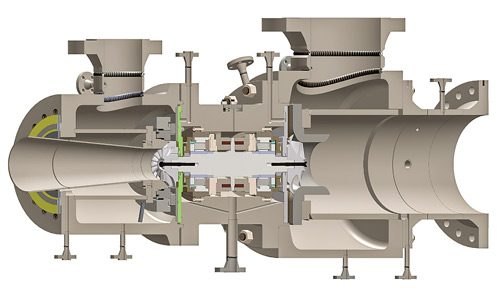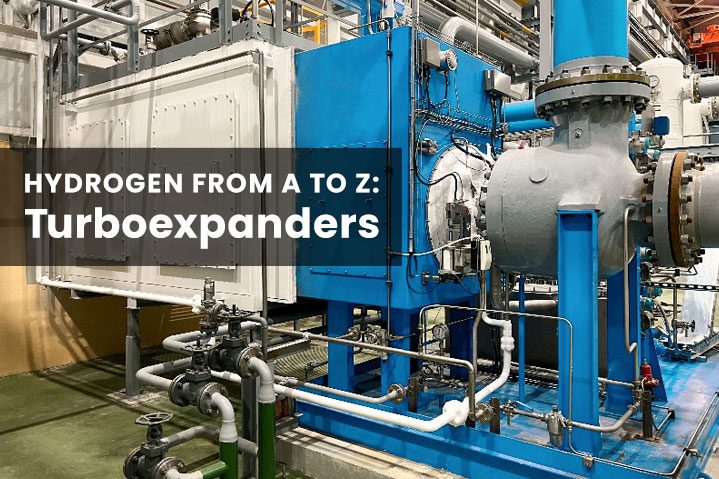Hydrogen From A to Z: T For Turboexpanders
By: GenH2 Staff
Read Time: 3 minutes
Defining the Hydrogen Economy from A to Z: T is for Turboexpanders
Continuing in our defining the Hydrogen economy from A to Z series, we are revisiting the letter T and discussing turboexpanders.
Turboexpanders or expansion turbines are commonplace in numerous industries today. In gas liquefaction or separation, these machines are used to help reduce gas temperatures to anywhere between 90 K to 19 K (-300 to -425 degrees Fahrenheit). In gas separation applications the variation in the temperature at which a gas liquifies is used to separate out certain gases such as Argon by liquefying it while leaving other components of the gas stream in the gaseous state. At GenH2, turboexpanders are essentially used to reduce the refrigeration cycle gas to cryogenic temperature to liquefy the hydrogen gas inside which is fed to the liquefier unit. The working fluid or “refrigerant” for the cryo-refrigeration process can be helium gas or hydrogen gas.
In 1857, 166 years ago, soon after the Joule-Thomson effect was discovered, proving that expansion of gas lowers the gas temperature, William Siemens developed a cycle using a machine expanding and performing work on a gas, causing the gas temperature to drop. The development work at this time was primarily targeted at cooling gases to produce ice from water, because ice taken from frozen lakes, ponds and rivers was used to cool food and homes at the time. Practical application of the Siemens cycle was, however, quite hard to achieve in practice. The first successful application of this concept was achieved by Georges Claude, using a reciprocating expansion machine, some 45 years later, in 1902, establishing a record for the lowest temperature ever recorded and enabling the liquefaction of nitrogen, oxygen and argon.
The first practical prototype of a centrifugal turboexpander was developed by Pyotr Kapitsa in Russia in 1939. The vast majority of turboexpanders used in industry today are based on the Kapitsa centrifugal expander design. Below is a rendering of the typical turboexpander design used in industry today.

The wheel shown on the left is the centrifugal expander wheel. Gas flows from the outside of the wheel inward and exits through the machine to the left. Here the gas undergoes expansion and pressure, and temperature are lowered. Extremely low exit gas temperatures can be achieved.
Shown on the right side of the turboexpander is the gas compressor where work is performed, preventing the turbine from overspeed, and extracting work energy from the gas stream. In this section of the turboexpander a gas is directed from the inside of the turbine wheel to the outside where the gas is compressed. A compressor is not, however, the only way to provide resistance to rotation of the turbine wheel. Other means of providing the resistance to rotation could include using an electrical generator to provide electricity which would flow through a resistance block to provide resistance, an oil bath brake or sending the electrical energy from the generator to the grid.
Expansion turbines, or turboexpanders, are important components in the cryo-refrigeration machines for hydrogen liquefaction, re-liquefaction of hydrogen gas, or the controlled storage of liquid hydrogen.
Please follow us next week for our next Defining the Hydrogen Economy from A to Z series blog.
Recommendations for further reading:
Historical Summary of Cryogenic Activity Prior to 1950, Ray Radebaugh, NIST, Boulder, CO
Fundamentals of Turboexpanders “Basic Theory and Design,” James Simms



